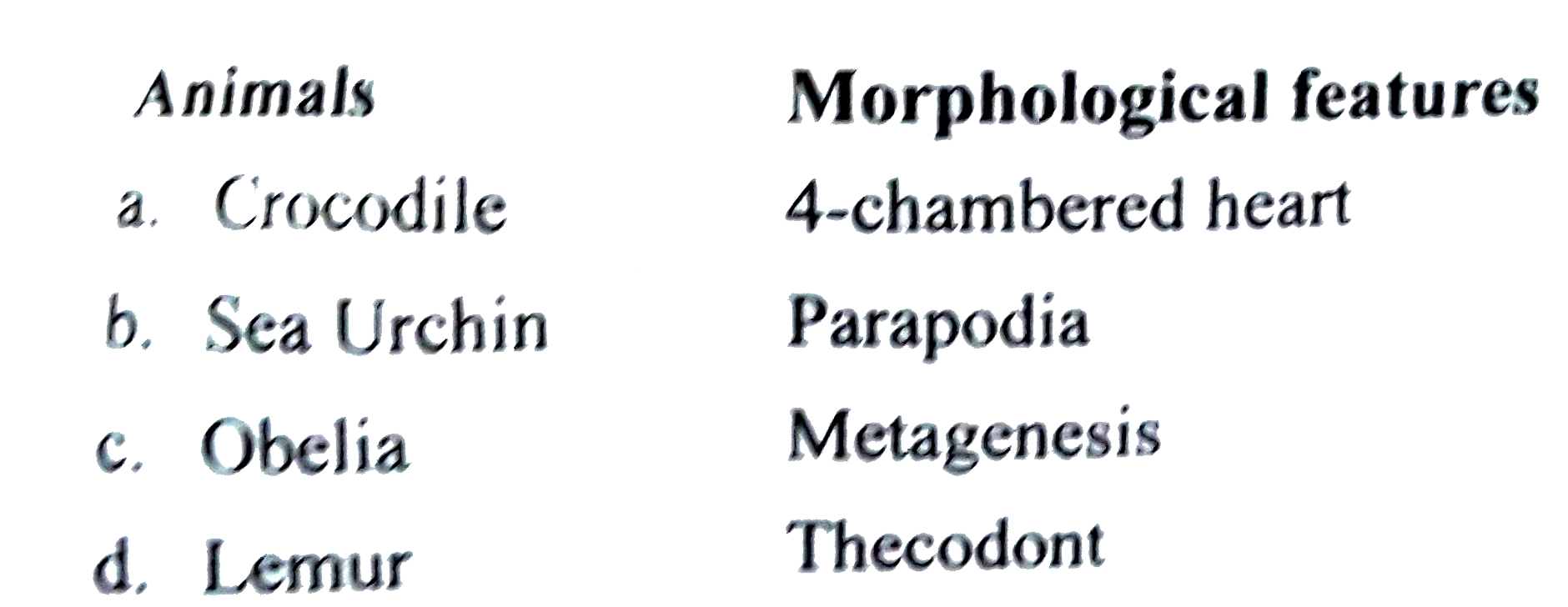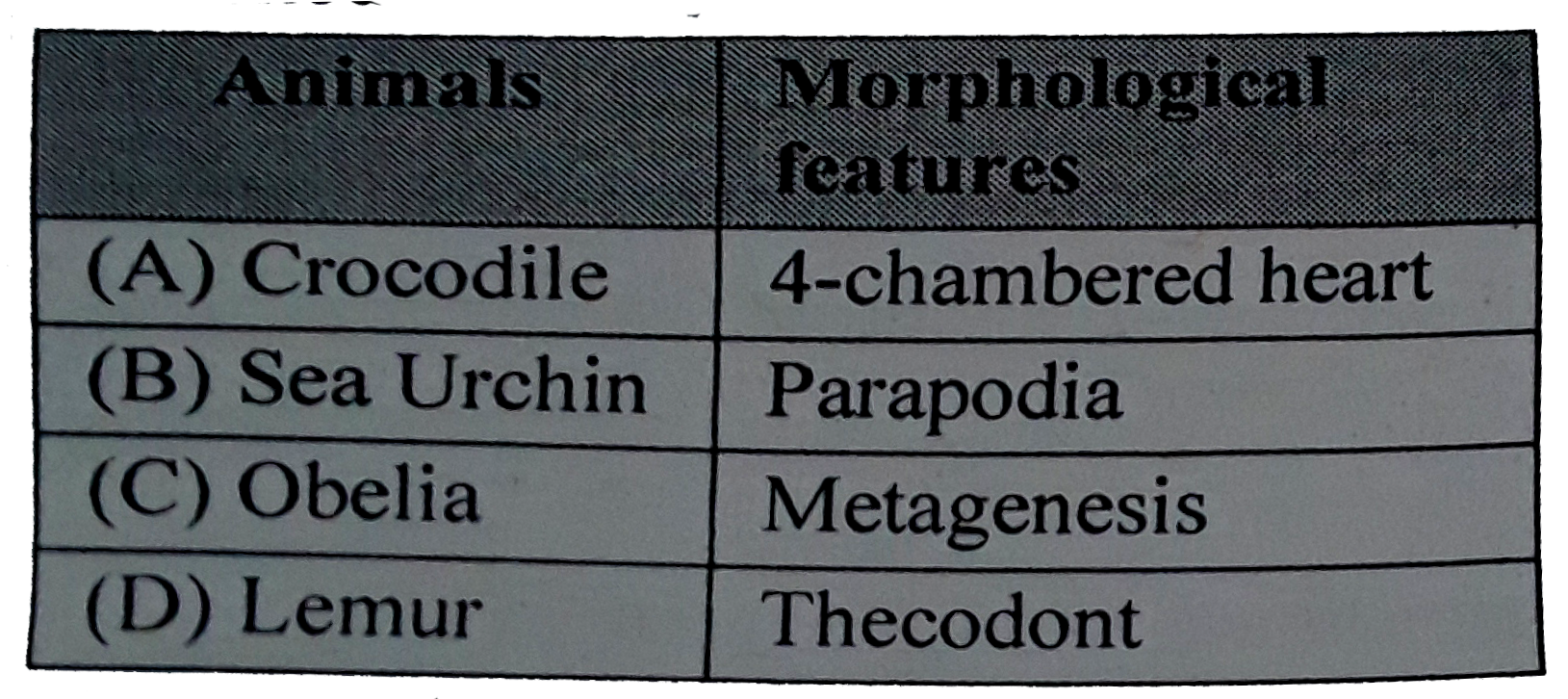Which of the following pairs is correctly matched ?
Hinge joint - Between vertebrae
Gliding joint - Between the carpals
Cartilaginous joint - Skull bones
Fibrous joint - Between phalanges
The correct Answer is:B
To determine which of the given pairs is correctly matched, we need to analyze each option based on the types of joints and their examples. Here’s a step-by-step breakdown:
Step 1: Understand the Types of Joints
- Hinge Joint: Allows movement in one plane (e.g., bending and straightening). Examples include the knee and elbow.
- Gliding Joint: Allows bones to slide over one another, providing flexibility. An example is the joints between the carpals in the wrist.
- Cartilaginous Joint: Allows limited movement and is connected by cartilage. An example is the joints between vertebrae.
- Fibrous Joint: Immovable joints where bones are connected by fibrous tissue. An example is the joints between skull bones.
Step 2: Analyze Each Option
1. Hinge Joint - Vertebrae: Incorrect. The joint between vertebrae is cartilaginous, not hinge.
2. Gliding Joint - Carpals: Correct. The joints between the carpals in the wrist are gliding joints.
3. Cartilaginous Joint - Skull Bones: Incorrect. Skull bones are connected by fibrous joints, not cartilaginous.
4. Fibrous Joint - Phalanges: Incorrect. The joints between phalanges are hinge joints, allowing movement.
Step 3: Identify the Correct Pair
From the analysis, the only correct pair is Gliding Joint - Carpals.
Conclusion
The correctly matched pair is Option B: Gliding Joint - Carpals.
---
- Hinge Joint: Allows movement in one plane (e.g., bending and straightening). Examples include the knee and elbow.
- Gliding Joint: Allows bones to slide over one another, providing flexibility. An example is the joints between the carpals in the wrist.
- Cartilaginous Joint: Allows limited movement and is connected by cartilage. An example is the joints between vertebrae.
- Fibrous Joint: Immovable joints where bones are connected by fibrous tissue. An example is the joints between skull bones.
1. Hinge Joint - Vertebrae: Incorrect. The joint between vertebrae is cartilaginous, not hinge.
2. Gliding Joint - Carpals: Correct. The joints between the carpals in the wrist are gliding joints.
3. Cartilaginous Joint - Skull Bones: Incorrect. Skull bones are connected by fibrous joints, not cartilaginous.
4. Fibrous Joint - Phalanges: Incorrect. The joints between phalanges are hinge joints, allowing movement.
From the analysis, the only correct pair is Gliding Joint - Carpals.
The correctly matched pair is Option B: Gliding Joint - Carpals.
Topper's Solved these Questions
- BOOK - NCERT FINGERTPS ENGLISHCHAPTER - LOCOMOTION AND MOVEMENTEXERCISE - Locomotion And Movement139videos
LOCOMOTION AND MOVEMENT
- BOOK - NCERT FINGERTPS ENGLISHCHAPTER - EXCRETORY PRODUCTS AND THEIR ELIMINATIONEXERCISE - Excretory Products And Their Elimination133videos
EXCRETORY PRODUCTS AND THEIR ELIMINATION
- BOOK - NCERT FINGERTPS ENGLISHCHAPTER - MINERAL NUTRITIONEXERCISE - Mineral Nutrition130videos
MINERAL NUTRITION
Similar Questions
Knowledge Check
- Question 1 - Select One
Which of the following pairs are correctly matched ?
AnimalsMorphological features(i)Crocodile−4-chambered heart(ii)Sea urchin−Parapodia(iii)Obelia−Metagenesis(iv)Lemur−ThecodontA(ii),(iii) and (iv)B(i) and (iv)C(i) and (ii)D(i),(iii) and (iv)
Which of the following pairs are correctly matched ?
 View Solution
View SolutionWhich of the following pairs are correctly matched?
View SolutionWhich of the following pair is correctly matched A.Fungi - Regeneration B.Mosses - Fragmentation C.Planaria - Budding
View SolutionWhich of the following pairs are correctly matched ?
AnimalsMorphological features(i)Crocodile−4-chambered heart(ii)Sea urchin−Parapodia(iii)Obelia−Metagenesis(iv)Lemur−ThecodontView SolutionWhich one of the following is correctly matched ?
View SolutionWhich of the following pairs is not correctly matched ?
View SolutionWhich of the following pairs is not correctly matched
View Solution


